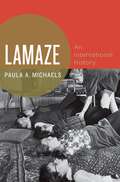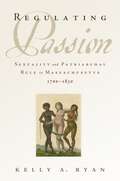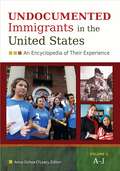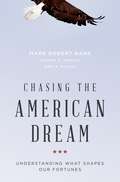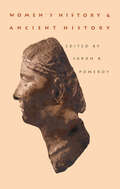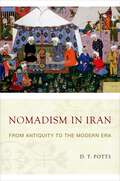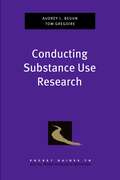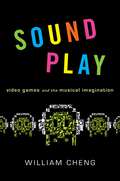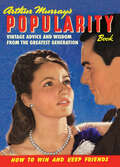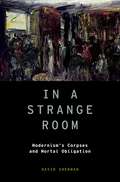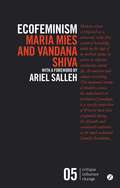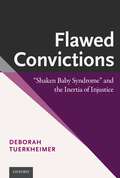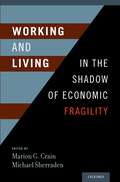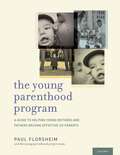- Table View
- List View
Burmese Lives: Ordinary Life Stories Under the Burmese Regime
This volume explores the life stories of ordinary Burmese by drawing on the narratives of individual subjects and using an array of interdisciplinary approaches, covering anthropology, history, literature, ethnomusicology, economics and political science. Burma is one of the most diverse societies in Southeast Asia in terms of its ethnic composition. It has a long history of resistance from the public realm against colonial rule and post-independence regimes. However, its isolation for decades before 1988 deprived scholars of a close look into the many faces of this society. Looking into the life stories of members of several major ethnic communities, who hail from different occupations and are of different ages and genders, this book has a particular significance that would help reveal the multiplicities of Burma's modern history. The authors of this volume write about stories of their long-term informants, close friends, family members, or even themselves to bring out a wide range of issues relating to migration, economy, politics, religion and culture. The constituted stories jointly highlight the protagonists' survival strategies in everyday life that demonstrate their constant courage, pain and frustration in dealing with numerous social injustices and adversities. Through these stories, we see movement of lives as well as that of Burmese society.
Ritual Textuality: Pattern and Motion in Performance (Oxford Ritual Studies)
by Matt TomlinsonA classic question in studies of ritual is how ritual performances achieve-or fail to achieve-their effects. In this pathbreaking book, Matt Tomlinson argues that participants condition their own expectations of ritual success by interactively creating distinct textual patterns of sequence, conjunction, contrast, and substitution. Drawing on long-term research in Fiji, Ritual Textuality presents in-depth studies of each of these patterns, taken from a wide range of settings: a fiery, soul-saving Pentecostal crusade; relaxed gatherings at which people drink the narcotic beverage kava; deathbeds at which missionaries eagerly await the signs of good Christians' "happy deaths"; and the monologic pronouncements of a military-led government determined to make the nation speak in a single voice. In each of these cases, Tomlinson also examines the broad ideologies of motion which frame participants' ritual actions, such as Pentecostals' beliefs that effective worship requires ecstatic movement like jumping, dancing, and clapping, and nineteenth-century missionaries' insistence that the journeys of the soul in the afterlife should follow a new path. By approaching ritual as an act of "entextualization"-in which the flow of discourse is turned into object-like texts-while analyzing the ways people expect words, things, and selves to move in performance, this book presents a new and compelling way to understand the efficacy of ritual action.
Ellen Wilkinson: From Red Suffragist to Government Minister (Revolutionary Lives)
by Paula BartleyEllen Wilkinson was a key radical figure in the 20th century British socialist and feminist movement, a woman of passionate energy who was involved in most of the major struggles of her time. *BR**BR*Born in October 1891 into a working-class textile family, Wilkinson was involved in women's suffrage, helped found the British Communist Party, led the Labour Party's anti-fascist campaign, headed the iconic Jarrow Crusade and was the first female Minister of Education.*BR* *BR*In this lively and engaging biography, Paula Bartley charts the political life of this extraordinary campaigner who went from street agitator to government minister whilst keeping her principles intact.
Lamaze: An International History (Oxford Studies in International History)
by Paula A. MichaelsThe Lamaze method is virtually synonymous with natural childbirth in America. In the 1970s, taking Lamaze classes was a common rite of passage to parenthood. The conscious relaxation and patterned breathing techniques touted as a natural and empowering path to the alleviation of pain in childbirth resonated with the feminist and countercultural values of the era. In Lamaze, historian Paula A. Michaels tells the surprising story of the Lamaze method from its origins in the Soviet Union in the 1940s, to its popularization in France in the 1950s, and then to its heyday in the 1960s and 1970s in the US. Michaels shows how, for different reasons, in disparate national contexts, this technique for managing the pain of childbirth without resort to drugs found a following. The Soviet government embraced this method as a panacea to childbirth pain in the face of the material shortages that followed World War II. Heated and sometimes ideologically inflected debates surrounded the Lamaze method as it moved from East to West amid the Cold War. Physicians in France sympathetic to the communist cause helped to export it across the Iron Curtain, but politics alone fails to explain why French women embraced this approach. Arriving on American shores around 1960, the Lamaze method took on new meanings. Initially it offered a path to a safer and more satisfying birth experience, but overtly political considerations came to the fore once again as feminists appropriated it as a way to resist the patriarchal authority of male obstetricians. Drawing on a wealth of archival evidence, Michaels pieces together this complex and fascinating story at the crossroads of the history of politics, medicine, and women. The story of Lamaze illuminates the many contentious issues that swirl around birthing practices in America and Europe. Brimming with insight, Michaels' engaging history offers an instructive intervention in the debate about how to achieve humane, empowering, and safe maternity care for all women.
Regulating Passion: Sexuality and Patriarchal Rule in Massachusetts, 1700-1830
by Kelly A. RyanSexuality was critical to how individuals experienced, learned, and contested their place in early America. Regulating Passion shows the sweeping changes that affected the social and political morass centered on sexual behavior during the late eighteenth and early nineteenth centuries in Massachusetts-even as patriarchy remained important to those configurations of power. Charting the government's and society's management of sexuality, Kelly A. Ryan uncovers the compelling stories of the individuals charged with sexual crimes and how elites hoped to contain and exploit "illicit" sexual behavior. In the colonial era, elites designed laws, judicial and religious practices, and sermons that defined certain groups as criminal, the cause of sexual vice, and in need of societal oversight-while defining others as chaste and above reproach. Massachusetts fornicators, adulterers, seducers, and rapists were exemplars of improper behavior in the colonial era and were central to emerging sexual subjectivities associated with gender, race, and class status in the early republic. As Massachusetts modernized, culture and socialization became vehicles for enforcing the marital monopoly on sex and gendered expectations of sexual behavior. The American Revolution saw the decline of direct sexual regulation by government and religious institutions and a rise in the importance of sexual reputation in maintaining hierarchy. As society moved away from publicly penalizing forms of illicit sexual behavior, it circulated ideas about sexual norms, initiated social ostracism, and interceded with family and friends to promote sexual morality, even as the government remained involved in cases of prostitution and interracial sex. At the same time, this transformation in sexual regulation opened up means to contest the power of patriarchy. Women, African Americans, Indians, and the poor often resisted the efforts of elites and established their own code of sexual conduct to combat ideas about what constituted sexual virtue and how society defined its leaders. They challenged derisive sexual characterizations, patriarchal visions of society, and sexual regulation to establish a space in the body politic. Ironically, their efforts often reinforced patriarchal ideals as their petitions asked for patriarchal privileges to be extended to them. Based on records of crimes in lower and upper courts, print literature, and other documentary sources, Regulating Passion underscores the ways in which sexual mores remained essential to the project of differentiating between the virtue of citizens and contesting power structures in the tumultuous transitions from the colonial to early national period.
Undocumented Immigrants in the United States [2 volumes]: An Encyclopedia of Their Experience [2 volumes]
This two-volume reference work addresses the dynamic lives of undocumented immigrants in the United States and establishes these individuals' experiences as a key part of our nation's demographic and sociological evolution.This two-volume work supplies accessible and comprehensive coverage of this complex subject by consolidating the insights of hundreds of scholars who have studied the issues of undocumented immigration in the United States for years. It provides a historical perspective that underscores the exponential growth of the undocumented population in the last three decades and presents a more nuanced, more detailed, and therefore more accurate portrait of undocumented immigrants than is available in general media. Also included are recommended resources that will serve researchers seeking more information on topics regarding undocumented immigrants.
Encyclopedia of Populism in America [2 volumes]: A Historical Encyclopedia [2 volumes]
This comprehensive two-volume encyclopedia documents how Populism, which grew out of post-Civil War agrarian discontent, was the apex of populist impulses in American culture from colonial times to the present.The Populist Movement was founded in the late 1800s when farmers and other agrarian workers formed cooperative societies to fight exploitation by big banks and corporations. Today, Populism encompasses both right-wing and left-wing movements, organizations, and icons. This valuable encyclopedia examines how ordinary people have voiced their opposition to the prevailing political, economic, and social constructs of the past as well how the elite or leaders at the time have reacted to that opposition. The entries spotlight the people, events, organizations, and ideas that created this first major challenge to the two-party system in the United States. Additionally, attention is paid to important historical actors who are not traditionally considered "Populist" but were instrumental in paving the way for the movement—or vigorously resisted Populism's influence on American culture. This encyclopedia also shows that Populism as a specific movement, and populism as an idea, have served alternately to further equal rights in America—and to limit them.
Research with Diverse Groups: Research Designs and Multivariate Latent Modeling for Equivalence (Pocket Guide to Social Work Research Methods)
by Antoinette Y. Farmer G. Lawrence FarmerSocial work researchers often conduct research with groups that are diverse in terms of gender, sexual orientation, race or ethnic background, or age. Consequently, social work researchers must take great care to establish research-design equivalence at all phases of the research process (e.g., problem formulation, research design, sampling, measurement selection, data collection, and data analysis); otherwise, the results might reflect methodological flaws rather than true group differences and therefore lead to erroneous conclusions. This book introduces the methodological precautions that must be taken into consideration when conducting research with diverse groups. Multigroup Confirmatory Analysis (MG-CFA) using structural equation modeling (SEM) was utilized to demonstrate how to assess seven types of measurement and structural equivalence that Milfont and Fischer (2010) have deemed important for studies with diverse samples. A hypothetical example was provided to illustrate how to design a study with good research-design equivalence. A case example was provided to demonstrate how to conduct an MG-CFA for each type of measurement and structural equivalence discussed. The Mplus syntax used to conduct the MG-CFA was provided. The results from the MG-CFA analyses were written up as they would be for publication.
Juvenile Justice Sourcebook
by Wesley T. Church David Springer Albert R. RobertsSeveral million reported and unreported delinquent acts take place each year. In fact, according to the U.S. Department of Justice and the U.S. Bureau of Justice Statistics, juvenile delinquency, acting-out and oppositional behavior, illegal drugs, guns, and youth violence are pervasive throughout American society. Juvenile Justice Sourcebook is the first comprehensive volume devoted exclusively to the biopsychosocial assessment, police and juvenile court processing, and institutional and community-based treatment and rehabilitation of juvenile offenders. The overriding objective of this sourcebook is to trace the tremendous progress achieved toward resolving juvenile justice issues, dilemmas, and controversies, while providing futuristic visions for the juvenile justice field. Each chapter, authored by preeminent expert practitioners and researchers, explores topics ranging from innovative counseling and multisystemic programs, to restorative justice, to rehabilitation programs such as aggression replacement training, wilderness programs, family treatment, substance abuse treatment, restitution, and aftercare. This volume, grounded in history and exhaustive research, presents the latest evidence-based policies, programs, and innovative treatment alternatives. Examining the entire juvenile justice system, including juvenile law, policies, practices, and research, the Juvenile Justice Sourcebook will be invaluable to all juvenile justice practitioners, policy analysts, researchers, and students.
Chasing the American Dream: Understanding What Shapes Our Fortunes
by Mark Robert Rank Thomas A. Hirschl Kirk A. FosterThe United States has been epitomized as a land of opportunity, where hard work and skill can bring personal success and economic well-being. The American Dream has captured the imagination of people from all walks of life, and to many, it represents the heart and soul of the country. But there is another, darker side to the bargain that America strikes with its people -- it is the price we pay for our individual pursuit of the American Dream. That price can be found in the economic hardship present in the lives of millions of Americans. In Chasing the American Dream, leading social scientists Mark Robert Rank, Thomas A. Hirschl, and Kirk A. Foster provide a new and innovative look into a curious dynamic -- the tension between the promise of economic opportunities and rewards and the amount of turmoil that Americans encounter in their quest for those rewards. The authors explore questions such as: -What percentage of Americans achieve affluence, and how much income mobility do we actually have? -Are most Americans able to own a home, and at what age? -How is it that nearly 80 percent of us will experience significant economic insecurity at some point between ages 25 and 60? -How can access to the American Dream be increased? Combining personal interviews with dozens of Americans and a longitudinal study covering 40 years of income data, the authors tell the story of the American Dream and reveal a number of surprises. The risk of economic vulnerability has increased substantially over the past four decades, and the American Dream is becoming harder to reach and harder to keep. Yet for most Americans, the Dream lies not in wealth, but in economic security, pursuing one's passions, and looking toward the future. Chasing the American Dream provides us with a new understanding into the dynamics that shape our fortunes and a deeper insight into the importance of the American Dream for the future of the country.
Creole Identity in Postcolonial Indonesia (Integration and Conflict Studies #9)
by Jacqueline KnörrContributing to identity formation in ethnically and religiously diverse postcolonial societies, this book examines the role played by creole identity in Indonesia, and in particular its capital, Jakarta. While, on the one hand, it facilitates transethnic integration and promotes a specifically postcolonial sense of common nationhood due to its heterogeneous origins, creole groups of people are often perceived ambivalently in the wake of colonialism and its demise, on the other. In this book, Jacqueline Knörr analyzes the social, historical, and political contexts of creoleness both at the grassroots and the State level, showing how different sections of society engage with creole identity in order to promote collective identification transcending ethnic and religious boundaries, as well as for reasons of self-interest and ideological projects.
Culture, Suicide, and the Human Condition
by Marja-Liisa Honkasalo Miira TuominenSuicide is a puzzling phenomenon. Not only is its demarcation problematic but it also eludes simple explanation. The cultures in which suicide mortality is high do not necessarily have much else in common, and neither is a single mental illness such as depression sufficient to lead a person to suicide. In a word, despite its statistical regularity, suicide is unpredictable on the individual level. The main argument emerging from this collection is that suicide should not be understood as a separate realm of pathological behavior but as a form of human action. As such it is always dependent on the decision that the individual makes in a cultural, ethical and socio-economic context, but the context never completely determines the decision. This book also argues that cultural narratives concerning suicide have a problematic double function: in addition to enabling the community to make sense of self-inflicted death, they also constitute a blueprint depicting suicide as a solution to common human problems.
Reporting Disasters: Famine, Aid, Politics and the Media
by Suzanne FranksThe media reporting of the Ethiopian Famine in 1984-5 was an iconic news event. It is widely believed to have had an unprecedented impact, challenging perceptions of Africa and mobilising public opinion and philanthropic action in a dramatic new way. The contemporary international configuration of aid, media pressure, and official policy is still directly affected and sometimes distorted by what was--as this narrative shows--also an inaccurate and misleading story. In popular memory, the reporting of Ethiopia and the resulting humanitarian intervention were a great success. Yet alternative interpretations give a radically different picture of misleading journalism and an aid effort which did more harm than good. Using privileged access to BBC and Government archives, Reporting Disasters examines and reveals the internal factors which drove BBC news and offers a rare case study of how the media can affect public opinion and policymaking. It constructs the process that accounts for the immensity of the news event, following the response at the heart of government to the pressure of public opinion. And it shows that while the reporting and the altruistic festival that it produced triggered remarkable and identifiable changes, the on-going impact was not what the conventional account claims it to have been.
We the Cosmopolitans: Moral and Existential Conditions of Being Human
by Lisette Josephides Alexandra HallThe provocative title of this book is deliberately and challengingly universalist, matching the theoretically experimental essays, where contributors try different ideas to answer distinct concerns regarding cosmopolitanism. Leading anthropologists explore what cosmopolitanism means in the context of everyday life, variously viewing it as an aspect of kindness and empathy, as tolerance, hospitality and openness, and as a defining feature of pan-human individuality. The chapters thus advance an existential critique of abstract globalization discourse. The book enriches interdisciplinary debates about hitherto neglected aspects of contemporary cosmopolitanism as a political and moral project, examining the form of its lived effects and offering new ideas and case studies to work with.
Women's History and Ancient History
by Sarah B. PomeroyThis collection of essays explores the lives and roles of women in antiquity. A recurring theme is the relationship between private and public, and many of the essays find that women's public roles develop as a result of their private lives, specifically their family relationships.Essays on Hellenistic queens and Spartan and Roman women document how women exerted political power--usually, but not always, through their relationship to male leaders--and show how political upheaval created opportunities for them to exercise powers previously reserved for men. Essays on the writings of Sappho and Nossis focus on the interaction between women's public and private discourses. The collection also includes discussion of Athenian and Roman marriage and the intrusion of the state into the sexual lives of Greek, Roman, and Jewish women as well as an investigation of scientific opinion about female physiology.The contributors are Sarah B. Pomeroy, Jane McIntosh Snyder, Marilyn M. Skinner, Cynthia B. Patterson, Ann Ellis Hanson, Lesley Dean-Jones, Natalie Boymel Kampen, Mary Taliaferro Boatwright, and Shaye J.D. Cohen.
Nomadism in Iran: From Antiquity to the Modern Era
by D. T. PottsThe classic images of Iranian nomads in circulation today and in years past suggest that Western awareness of nomadism is a phenomenon of considerable antiquity. Though nomadism has certainly been a key feature of Iranian history, it has not been in the way most modern archaeologists have envisaged it. Nomadism in Iran recasts our understanding of this "timeless" tradition. Far from constituting a natural adaptation on the Iranian Plateau, nomadism is a comparatively late introduction, which can only be understood within the context of certain political circumstances. Since the early Holocene, most, if not all, agricultural communities in Iran had kept herds of sheep and goat, but the communities themselves were sedentary: only a few of their members were required to move with the herds seasonally. Though the arrival of Iranian speaking groups, attested in written sources beginning in the time of Herodutus, began to change the demography of the plateau, it wasn't until later in the eleventh century that an influx of Turkic speaking Oghuz nomadic groups-"true" nomads of the steppe-began the modification of the demography of the Iranian Plateau that accelerated with the Mongol conquest. The massive, unprecedented violence of this invasion effected the widespread distribution of largely Turkic-speaking nomadic groups across Iran. Thus, what has been interpreted in the past as an enduring pattern of nomadic land use is, by archaeological standards, very recent. Iran's demographic profile since the eleventh century AD, and more particularly in the nineteenth and twentieth century, has been used by some scholars as a proxy for ancient social organization. Nomadism in Iran argues that this modernist perspective distorts the historical reality of the land. Assembling a wealth of material in several languages and disciplines, Nomadism in Iran will be invaluable to archaeologists, anthropologists, and historians of the Middle East and Central Asia.
Conducting Substance Use Research (Pocket Guide to Social Work Research Methods)
by Audrey L. Begun Thomas K. GregoireThis book assists new and experienced scholars in planning and conducting high quality, contemporary studies for knowledge building about substance use. The target audience is individuals new to substance use as a field of study, either as novice researchers or as experienced researchers in other areas who find themselves lacking experience to address overlapping issues of substance use. Organized around a translational science framework, the contents address substance use research about epidemiology, etiology, intervention efficacy and effectiveness, and implementation of evidence-informed interventions. In addition, examples and issues are drawn from social work traditions involving multiple levels of study (organisms to large social systems), integrating biopsychosocial aspects, and adopting a lifespan perspective. The authors examine the implications for research of current "great debates" in the field and present readers with a variety of specific substance use research resources and tools. This practical "how to" guide takes the reader step-by-step through issues specific to substance use research in study design, participant recruitment and retention, measurement and analysis, and the processes involved in the dissemination, diffusion, and implementation of evidence-informed innovations. A variety of technical resources and measurement tools are provided, as are references to journals for scholars to consider both as knowledge resources and as outlets for disseminating their work. In sum, this book offers a fresh approach to conducting substance use research that is not readily available in other texts.
Sound Play: Video Games and the Musical Imagination (Oxford Music / Media)
by William ChengVideo games open portals to fantastical worlds where imaginative play and enchantment prevail. These virtual settings afford us considerable freedom to act out with relative impunity. Or do they? Sound Play explores the aesthetic, ethical, and sociopolitical stakes of people's creative engagements with gaming's audio phenomena-from sonorous violence to synthesized operas, from democratic music-making to vocal sexual harassment. William Cheng shows how video games empower their designers, composers, players, critics, and scholars to tinker (often transgressively) with practices and discourses of music, noise, speech, and silence. Faced with collisions between utopian and alarmist stereotypes of video games, Sound Play synthesizes insights across musicology, sociology, anthropology, communications, literary theory, philosophy, and additional disciplines. With case studies spanning Final Fantasy VI, Silent Hill, Fallout 3, The Lord of the Rings Online, and Team Fortress 2, this book insists that what we do in there-in the safe, sound spaces of games-can ultimately teach us a great deal about who we are and what we value (musically, culturally, humanly) out here. Foreword by Richard Leppert Video Games Live cover image printed with permission from Tommy Tallarico
Arthur Murray’s Popularity Book: Vintage Advice and Wisdom from The Greatest Generation
by Arthur MurrayFIRST PUBLISHED IN 1944, the Popularity Book is a vintage guidebook full of wise and wonderful advice on living well, building poise and maintaining good relationships. Drawing on books, testimonials and magazines from the World War II era, it shows the forthright common sense and charming romanticism of the "Greatest Generation†?, a generation inspired by debonair role models such as Clark Gable, Cary Grant and Katharine Hepburn. As relevant today as it was in the 1940s, the Popularity Book offers counsel on being an unforgettably great date, eliciting a marriage proposal, and how to be generally charming. Compiled and originally published by Arthur Murray, it also features his iconic step-by-step footprint instructions on how to Samba, Fox Trot and Rumba divinely!
Arthur Murray’s Popularity Book: Vintage Advice and Wisdom from The Greatest Generation (Old House Ser.)
by Arthur MurrayFIRST PUBLISHED IN 1944, the Popularity Book is a vintage guidebook full of wise and wonderful advice on living well, building poise and maintaining good relationships. Drawing on books, testimonials and magazines from the World War II era, it shows the forthright common sense and charming romanticism of the “Greatest Generation”, a generation inspired by debonair role models such as Clark Gable, Cary Grant and Katharine Hepburn. As relevant today as it was in the 1940s, the Popularity Book offers counsel on being an unforgettably great date, eliciting a marriage proposal, and how to be generally charming. Compiled and originally published by Arthur Murray, it also features his iconic step-by-step footprint instructions on how to Samba, Fox Trot and Rumba divinely!
In a Strange Room: Modernism's Corpses and Mortal Obligation (Modernist Literature and Culture #21)
by David ShermanLiterary modernism emerged as death, stripped in the developing world of traditional meanings and practices, became strange. The sea-change over the first part of the twentieth century in how people died and tended corpses-the modernization of death-was a crucial context in which modernist writers developed their new novelistic and poetic techniques. They sought ways to renovate mortal obligations in an age of the obsolescence of the dead. For many years, the flesh-and-blood body has been a central protagonist in literary scholarship--the body in pain, the body as spectacle and performance, embodiments of social identity--but the body in its mortality, as corpse, has not received sustained critical attention. Filling this gap, In a Strange Room investigates modernism's preoccupation with corpses, death rituals, and the ethical demands the dead make on the living who survive them. Informed by insights from psychology, anthropology, political theory, and philosophy, David Sherman shows how modernist aesthetics sought to re-animate the complex meanings and values of dead bodies during an era of their efficient, medical administration and hygienic disposal. The modernist imagination reckoned with the processes by which the modern corpse became a secularized object increasingly subject to scientific inquiry, governmental regulation, specialized medical technologies, and new forms of market exchange. Chapters explore representations of state power over the war dead in Virginia Woolf and Wilfred Owen, the narrative problem of the unburied corpse in As I Lay Dying and Ulysses, mortal obligation as erotic desire in Eliot's The Waste Land and Djuna Barnes's Nightwood, and mortuary pedagogies embedded in elegies by Wallace Stevens and William Carlos Williams. Gathering examples from fiction, poetry, and the visual arts, In a Strange Room considers the changing relationship between aesthetics and mortality during the first half of the twentieth century. New attitudes toward dying and dead bodies demanded modernism's strange, bracing ways of representing ethics at the limits of life.
Ecofeminism (Critique Influence Change)
by Vandana Shiva Maria MiesThis groundbreaking work remains as relevant today as when it was when first published. Two of Zed's best-known authors argue that ecological destruction and industrial catastrophes constitute a direct threat to everyday life, the maintenance of which has been made the particular responsibility of women. In both industrialized societies and the developing countries, the new wars the world is experiencing, violent ethnic chauvinisms and the malfunctioning of the economy also pose urgent questions for ecofeminists. Is there a relationship between patriarchal oppression and the destruction of nature in the name of profit and progress? How can women counter the violence inherent in these processes? Should they look to a link between the women's movement and other social movements?Maria Mies and Vandana Shiva offer a thought-provoking analysis of these and many other issues from a unique North-South perspective. They critique prevailing economic theories, conventional concepts of women's emancipation, the myth of 'catching up' development, the philosophical foundations of modern science and technology, and the omission of ethics when discussing so many questions, including advances in reproductive technology and biotechnology.In constructing their own ecofeminist epistemology and methodology, these two internationally respected feminist environmental activists look to the potential of movements advocating consumer liberation and subsistence production, sustainability and regeneration, and they argue for an acceptance of limits and reciprocity and a rejection of exploitation, the endless commoditization of needs, and violence.
Flawed Convictions: "Shaken Baby Syndrome" and the Inertia of Injustice
by Deborah TuerkheimerThe emergence of Shaken Baby Syndrome (SBS) presents an object lesson in the dangers that lie at the intersection of science and criminal law. As often occurs in the context of scientific knowledge, understandings of SBS have evolved. We now know that the diagnostic triad alone does not prove beyond a reasonable doubt that an infant was abused, or that the last person with the baby was responsible for the baby's condition. Nevertheless, our legal system has failed to absorb this new consensus. As a result, innocent parents and caregivers remain incarcerated and, perhaps more perplexingly, triad-only prosecutions continue even to this day. Flawed Convictions: "Shaken Baby Syndrome" and the Inertia of Injustice is the first book to survey the scientific, cultural, and legal history of Shaken Baby Syndrome from inception to formal dissolution. It exposes extraordinary failings in the criminal justice system's treatment of what is, in essence, a medical diagnosis of murder. The story of SBS highlights fundamental inadequacies in the legal response to "science dependent prosecution." A proposed restructuring of the law contends with the uncertainty of scientific knowledge.
Working and Living in the Shadow of Economic Fragility
Not since the Great Depression of the 1930s has the United States faced such a prolonged period of high unemployment and underemployment. Recovery from the "Great Recession" that began in 2008 has been slow, and is projected to remain sluggish over the next several years, while another shock to the global economy could erase the meager gains of the past months. Economic conditions remain fragile and employment challenges show no sign of letting up. With persistently high unemployment and underemployment-and growing inequality in wages-an increasing number of American families are no longer adequately supported by employment income and basic benefits. Many older workers have "retired" before they are ready, and many young workers cannot find a foothold in the job market. A silent crisis is underway, with huge social and economic costs for the nation. Working and Living in the Shadow of Economic Fragility examines the current state of employment through historical, macroeconomic, cultural, sociological and policy lenses, in order to address fundamental questions about the role and value of work in America today. The book offers suggestions for how to address the short- and long-term challenges of rebuilding a society of opportunity with meaningful and sustaining jobs as the foundation of the American middle class.
The Young Parenthood Program: A Guide to Helping Young Mothers and Fathers Become Effective Co-parents
by Paul FlorsheimThe rate of young unwed couples and teens having children is increasing, and many of these couples choose to "co-parent" children, rather than to marry and remain in a relationship. Young parents are at risk for engaging in dysfunctional parenting practices and intimate partner violence, and face additional challenges on top of their own developmental struggles. Social workers and other mental health services providers can play a role in this process by supporting the interpersonal development of young couples who are at-risk for intimate partner violence, child abuse/neglect, and paternal disengagement. Unfortunately, many professionals lack formalized training in this area and there are few programs available to give the necessary support. The Young Parenthood Program (YPP) was designed and launched in order to meet this need. YPP is a brief program (12-14 sessions), initiated prior to childbirth when both parents are more willing and able to participate in co-parent counseling. The program is intended to teach the young couple a basic set of interpersonal communication and problem solving skills to provide a foundation for a co-parenting model for raising their child. Clinical trials have indicated that couples who participated in YPP demonstrated better relationship skills, lower rates of intimate partner violence (IPV), less paternal disengagement, and more positive parenting behavior among young fathers. The importance and challenges of working with young fathers who are reluctant to engage and participate is emphasized throughout this proposed guide. The guide is designed to help social workers and practitioners by offering a solution-oriented approach to the challenges of co-parenting among adolescents and young adults. This practitioner's guide would expand the training materials that Florsheim and his colleagues have developed. In addition to the manual itself, the authors are developing a CEU module, to be hosted by the University of Wisconsin-Milwaukee, to try to reach into practitioner markets and encourage the use of the program.



